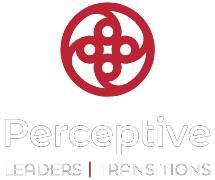
Any experienced bricklayer knows the importance of both visual symmetry and strength achieved by proper alignment in the setting of bricks. They know that the right mix of mortar – basic chemistry – establishes a cohesion and durability in all directions as bricks are laid.
The metaphor of bricks and mortar – in this case applied to leadership teams and not a physical building – is useful in understanding how to build a high-performing senior team. Cohesion and alignment are required for every team to be successful. For a senior team leader, and for many teams, these can pose a challenge. This post will explore how both principles can build team effectiveness throughout their evolution.
Three aspects of alignment
Alignment occurs when a team that is collectively responsible for achieving a common objective for their organization is aligned around, and committed to, that shared objective.
We propose that there are three aspects of this alignment. We’ll focus here on the work of senior leadership teams and strategic alignment. We’ll discuss those three aspects in this post.
For a senior or executive leadership team the focus is on strategic enterprise-wide objectives. Depending on the team and the situation that may be a single objective that is critical and closer in focus, or it may be a set of objectives. What matters is that they are clear on what those are, and they are committed to achieving them together.
What alignment here doesn’t mean is that there is necessarily consensus. It may ultimately happen but it’s not the goal. Disagreement, and the push pull of testing and challenging ideas and approaches is important to arriving at objective(s) that are most on point for the organization. It’s also essential for a team in building their strength as a team.
A second aspect of alignment looks at what will need to happen for the organization to achieve its strategic objective(s). It’s the senior team that needs to be taking this aerial view across the functional areas of the organization. They are the conductors so to speak who connect strategic objective(s) to the enterprise’s organizational capabilities. As a team, they orchestrate how functional areas of the organization will need to come together to achieve strategic objective(s).
A third aspect of alignment means they have a shared understanding as a team as to how they get here – how they reach that strategic and organizational alignment referred to in the first and second aspects. It’s about how they come together as a high-performing senior team to do this work. This “how” aspect of alignment is discussed further in another post.
Alignment brings essential benefits to senior leadership teams and their organizations. Communication is more fluid throughout team dialogues and creates clarity in communication across the enterprise. When senior teams are aligned it helps every other leader and person in the organization do their best work. There are fewer distractions for everyone in moving forward, enabling more efficiency and in the end, a better shot at achieving those objective(s).
Cohesion as the ties that bind
Returning to our metaphor, cohesion is the effect of team chemistry – if the mortar is not mixed with the right amount of cement and water, it will fail to harden.
Cohesion, for a team, revolves around trust. In this way, it’s the opposite of “hardening” in the literal sense of cement in this metaphor. But the idea of cohesion, as binding, is essential. The more individual leaders trust one another, the stronger the bonds will be in driving toward successful and shared outcomes. If they don’t trust each other, it will be very difficult for the team to do its work well, and in the end, achieve it’s shared strategic objectives across the enterprise.
Trust is an interesting and multifaceted thing. There are many dimensions of trust. A person can be trust-worthy in one dimension of trust and not another. This may also be situational. For this reason, it’s important for teams to talk about what trust looks like on the team. Is it about being truthful (speaking honestly)? Is it about by being capable (my ability to do something)? Is it about my being reliable (doing what I say I will do)? Or something else.
Most if not all of us would say that truthfulness is essential to trust. What about being transparent? Showing you who I am with all my foibles and vulnerabilities. Patrick Lencioni has a useful definition of this which he calls vulnerability-based trust.
In our work with senior teams, we find that the answer varies somewhat by person, and there are shared perspectives as well. It’s usually not too difficult to arrive at a shared agreement. The process of getting there, the dialogue, can be incredibly helpful to a team in building the very trust that is required for a team to perform well together.
Alignment and cohesion are the bricks and mortar of any high performing senior team.
© Perceptive Leaders, 2022. All rights reserved.



